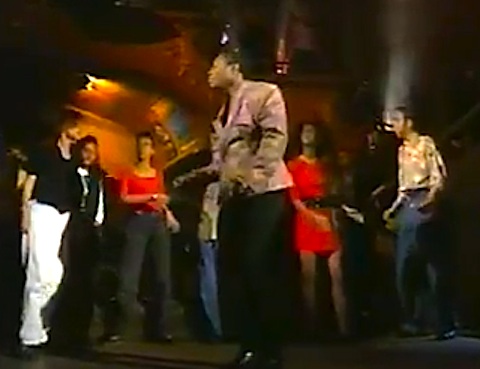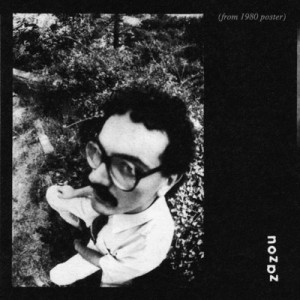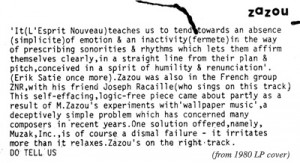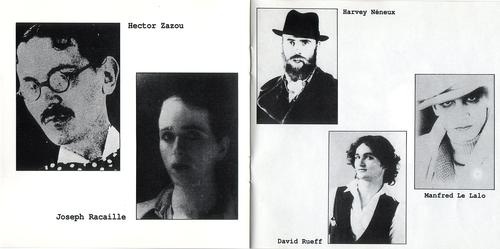M1-36 Zazou
Erik Satie has, I have mentioned probably too often, long been a hero of mine. Like Robert Wyatt, Ivor Cutler, and so many of the Miniatures artists, he has created his own unique world which combines humour, modesty, and eccentricity with a sharply intelligent sense of beauty and a kind of affectionate philosophy. One of the first albums I made since my move to Japan was “Inside Satie” – a collection of improvisations on Satie. Long before that, I had always kept an eye (and an ear) out for interesting cover versions of Satie, as well as for any artists or bands who seem to embody his spirit.
ZNR were just one such band, with their minimal surreal sketches in sound. Of course they had the immediate advantage of being French. They were one of the first French artists I had discovered who appeared to operate in that wide unexplored no-man’s-land between the great French pop and chanson (Piaf, Trenet) and the more academic, rarified world of Debussy, Messaien, musique concrète, etc. They were my peers, around my age and ability, and with similarly limited resources, experimenting with sound and music in just the way I like.
I discovered them through Recommended Records, run by Henry Cow’s drummer Chris Cutler, and as soon as I came up with the Miniatures concept, they were on my list. After I invited them to join the project, the two members of ZNR, Hector Zazou and Joseph Racaille immediately offered to make one track each rather than a joint track. That felt like a bonus to me!
Not long after, I had the chance of a trip to France, to go to a new music festival in Reims (Festival Musiques Nouvelles / Rock In Opposition, April 18-20, 1980). ZNR played at the festival, and once it was over I asked if I could pay Hector a visit. Not only did he generously let me stay in his Paris home, but asked me to collaborate with him in his upcoming concert. During our one brief rehearsal, he asked me to play the piano “ironically” – so I froze uncomprehendingly for a minute, then played a little quieter. On the night of the show one of the singers turned up in a full cowboy outfit yet sang in a rather operatic tenor voice. I could see that Hector’s proclivity for musical mixing-and-matching, and stories far removed from his suburban Paris environment, was already fully in evidence. He was in transition from a music journalist into a wide-ranging music producer, and evidently his communication/arranging skills improved exponentially, judging by the stellar gathering of musical luminaries he worked with in the coming years.
 [the above photo relates to the remarkable 1983 recording Noir et Blanc by Zazou/Bikaye/CY1, which has been described as sort of the sound of young Zaire meets Suicide at the grassroots of dub. It then launches into an aural adventure that takes in many, many things…]
[the above photo relates to the remarkable 1983 recording Noir et Blanc by Zazou/Bikaye/CY1, which has been described as sort of the sound of young Zaire meets Suicide at the grassroots of dub. It then launches into an aural adventure that takes in many, many things…]
As with many of the Miniatures artists, we lost touch for quite a while due to my various travels, however, once established in Japan, I became aware of Hector’s musical projects via the 1992 album “Sahara Blue” – which had an impressive number of collaborators, including John Cale, Lisa Gerrard and Brendan Perry of Dead Can Dance, Gérard Depardieu, David Sylvian, Bill Laswell, Ryuichi Sakamoto, and Tim Simenon. Released on the admirable and still very active Belgian independent label Crammed Discs, its packaging was a stylish list of the participating artists. (Aside: I emulated this idea when it came to designing the cover for “Miniatures 2” – however the record company who released it in Japan were astonished, saying “why would you put all the artist credits on the front? normally they go on the back!” so for that market the credits were removed from the front cover.) After seeing the “Sahara Blue” cover (especially the back) I realised that Hector had been very busy in the years since we had met, establishing a strong rapport with artists from all over the globe, in all genres of music. It was as if he took an album like Miniatures and managed to smear or erase the gaps between the tracks and layered the various kinds of music over each other with remarkable skill.
This was how Hector continued his career, blending the past and the present, the ethnic and jazzy and electronic, as exemplified in the numerous albums listed in his excellent, informative Wikipedia entry. Among his subsequent collaborators – a veritable Who’s Who of music – are Björk, Siouxsie Sioux, Suzanne Vega, the Balanescu Quartet, Mark Isham, Marc Ribot, Harold Budd, Peter Gabriel, Sandy Dillon, William Orbit, Laurie Anderson, Jane Birkin, Asia Argento, and Miniatures artists Sainkho Namtchylak, Tokiko Kato, Jane Siberry and Robert Fripp.
In 2008 I tracked down Hector’s manager in order to settle some minor business matter, and received what felt like a rather distraught email saying that Hector was gravely ill in hospital. It turned out that he was in the final stages of cancer, and soon, on September 8, tragically young at 60 years old, he left us.
Just weeks later, his last album was released, a richly-layered meditative blend of mainly Indian instrumental improvisations transformed by Hector’s painterly use of electronic effects.
But one more album appeared in 2011, presumably one that he had left un- (that is to say, almost-) finished. I am listening to “The Arch” as I write. It is a collaboration with the Eva Quartet – four female singers from Bulgaria. Such singers are obviously already capable of creating deep and uplifting emotions in the listener, with their thrilling clusters of dissonant-consonant harmonies (as Crosby, Stills and Nash discovered when they had only just got together, listening to the mid-60’s “Music of Bulgaria” album on Nonesuch). Hector, though, does here what he always did best – transforms superb regional music into a much wider, global expression of human love, pain and hope – uniting us in the oneness we so need to feel and be reminded of again and again. In a word – mercy. Merci!
Next up: mallets for Bela.




